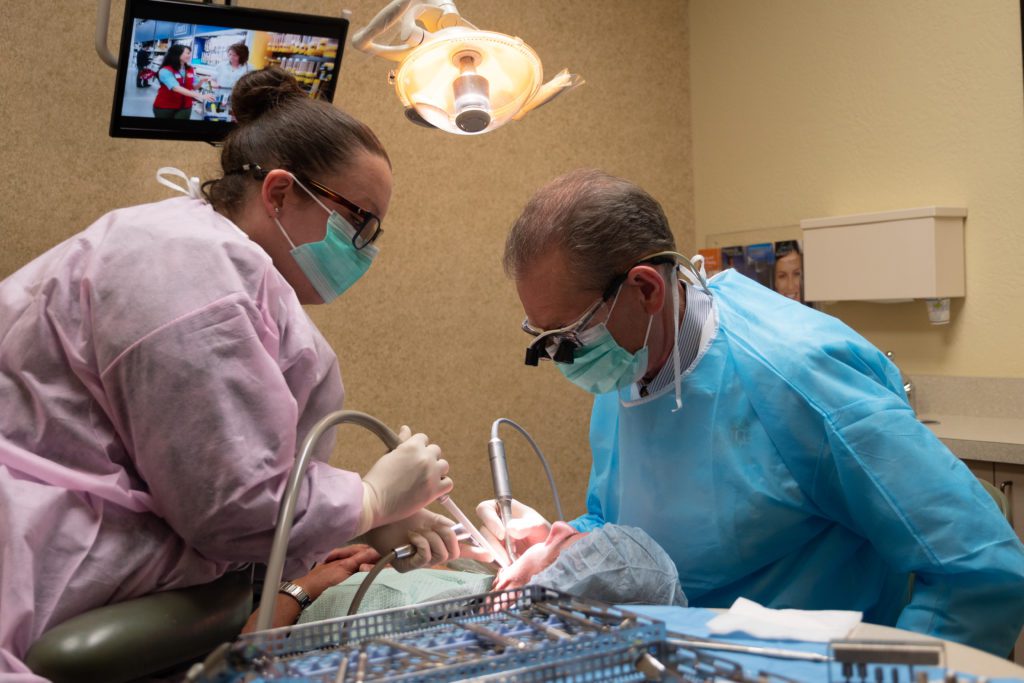Enhancing the dental experience.

DentalVibe: Our dentists pride themselves on their gentle approach to dentistry; this is especially noticeable in the delivery of anesthesia. Despite our gentle chairside techniques, your mouth may still be sensitive to injections. We understand that, so we offer the DentalVibe Injection Comfort System, which further reduces the pain of injections. This state-of-the-art system uses revolutionary VibraPulse technology to send soothing, pulsating vibrations deep into your gums so your brain focuses on those vibrations instead of the injection itself. DentalVibe is gentle, fast, and safe. You don’t have to take any pills, inhale any gas, or deal with drowsy aftereffects.
Digital Shade Matching: One key to creating great crowns or bridges is making them look like your natural teeth by more precisely matching the color of adjacent teeth. Your teeth are not simply one color; they are a spectrum of colors that change from the top of each tooth to the bottom. Because each dentist may visualize color in a different way based on lighting conditions, tooth color variations, and professional judgment, we can use the digital shade matching tool to minimize those variations. Unlike the conventional way of matching a tooth shade—which is to visually match the tooth to a porcelain shade guide held up to your mouth—the handheld digital shade matching device uses photo-sensing technology to photograph sections of the tooth and match the color from top to bottom. The tip of this device is placed on various areas of your tooth, it senses the spectrum of colors for each area, and then matches those colors to a database to create the best porcelain-material match.
Soft Tissue Laser: On occasion it is necessary to cut the soft tissue inside of the mouth. This can be done by using a scalpel or by using a soft tissue laser, a less invasive laser technique. The handheld laser generates a beam of concentrated light, and when that beam reaches soft tissue it cuts through it by vaporization while leaving the surrounding area untouched. It also sterilizes the area and clots blood vessels to minimize infection and bleeding. The soft tissue laser allows the dentist or hygienist to perform minimally invasive soft tissue and hygiene procedures like treating dentin sensitivity, performing a periodontal cleaning, and recontouring your gums without a drill or incision.
Magnification Loupes: Magnification loupes are similar to a magnifying glass, but are attached to eyewear to make them a hands-free tool for the dentist. Precise treatment requires attention to detail for both diagnosis and clinical exactness, and because dentists have to work in very small spaces inside your mouth, they use these magnification loupes to achieve accuracy to a fraction of a millimeter.
